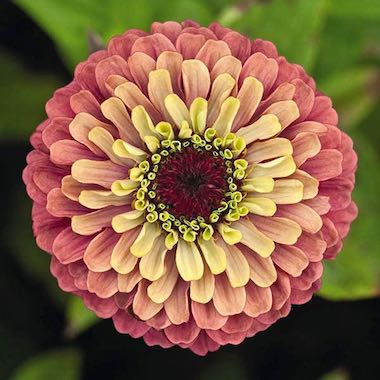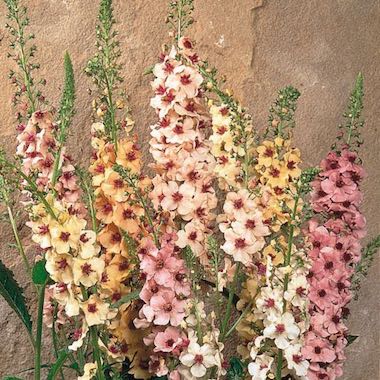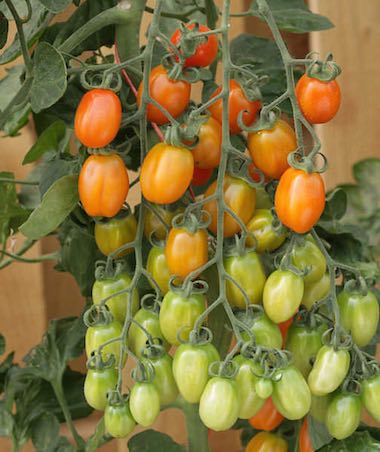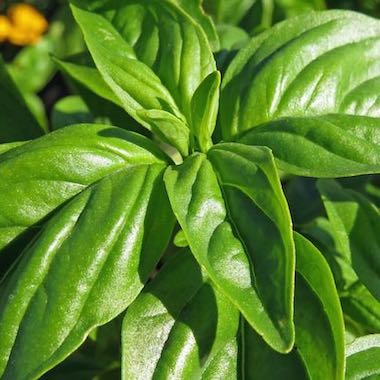Posts by Ben
Early Blight and Septoria Leaf Spot on Tomato Plants Posted by Ben on May 16, 2018
Early blight and Septoria leaf spot infections most commonly begin in the early or middle part of the growing season but can start at any time. Infections can occur anywhere and are most severe in wet and humid areas.
How to identify Early Blight
Photo of Early Blight by Dwight Sipler [CC BY 2.0]
Symptoms of early blight typically begin on the older, lower leaves of a tomato plant. Over time, infections spread upward to newer growth. Early blight infections appear as spots that may start out...
[ Read More ]
Spooky Bug Photos Posted by Ben on October 25, 2017
As a fun way to celebrate Halloween, I want to share photos and facts about some insects that you might find in and around your home and garden. Below are eight possible reasons to start wearing your garden gloves more often.
Potato Bug - I've found potato bugs, also known as Jerusalem crickets, in my garden and once in my bedroom! They hiss and can grow to a length of 2 inches!
Cabbage Looper - This garden pest is most commonly found on cabbage and other related plants such as broccoli and kale.
Earwig...
[ Read More ]
How to Store Seeds Posted by Ben on September 29, 2017
Seeds are best stored in a cool, dark and dry location.
Cool and consistent temperatures are best. Avoid storing seeds near doors, windows, heating/cooling vents and other sources of hot or cold air.
Storing seeds in a dark location is best but anywhere away from direct sunlight and other sources of bright light will work.
Seeds can absorb moisture from the air, so it's best to store them in moisture proof containers. Containers should also be pest proof if the storage location is not free of pests.
At...
[ Read More ]
Garden Pests: Gophers Posted by Ben on August 10, 2017
Are gophers a problem in your area? I grew up in an area without any gophers. It didn’t know how lucky I was to have my first garden in such a place. Moles were a problem in my first garden but they never killed any of my plants.
After I moved to Sonoma County, California, I quickly learned how much of a pest gophers can be. My first garden in Sonoma County was a small 12-foot by 12-foot plot that I surrounded with fencing in hopes of keeping out hungry deer and chickens. Even though the fencing wasn’t...
[ Read More ]
Poppies for Early Season Color Posted by Ben on July 31, 2017
Poppies for Early Season Color
Poppies are easy to grow and can add an amazing variety of early season color to your garden. Poppies can grow in most areas and are particularly well-suited for cooler northern climates. California Poppies can thrive in heat better than most types of poppies. We sell more than 30 varieties, including five types of annual poppies and three types of perennial poppies.
Poppy flowers come in a wide range of colors including red, white, blue, pink, pewter, lilac, purple, black...
[ Read More ]
Garden Pests: Tomato Hornworm Posted by Ben on July 12, 2017
Tomato hornworms are very large caterpillars that can grow up to four inches long. Adult caterpillars are bright green with white stripes and dark eye-like spots on each section of their abdomens. Coloration on young caterpillars is typically lighter but with similar patterns.
They’re fairly easy to identify but not always easy to find as they blend in with the foliage of their favorite food, the tomato plants in our gardens. You’ll likely find evidence of tomato hornworms in the form of dark green or...
[ Read More ]
Garden Pests: Slugs and Snails Posted by Ben on June 26, 2017
Garden Pests: Slugs and Snails
Ways to control slugs and snails in your garden:
Water in the morning, not in the evening.
Watering in the morning allows the soil surface to dry out before nighttime when slugs and snails are most active. Slugs and snails prefer to travel on moist surfaces. Dry surfaces will slow down their activity and limit the subsequent damage to your plants.
Share a beer with the slugs and snails.
Fill a shallow dish with beer and place it in your garden. Slugs and snails are...
[ Read More ]
Garden Pests: Cucumber Beetles Posted by Ben on June 16, 2017
Garden Pests: Cucumber Beetles
The Pest:
There are two types of cucumber beetles, striped (Acalymma vittatum) and spotted (Diabrotica undecimpunctata). Both types are about 1/4 inch long and yellowish-green in color (sometimes orangish-green), one with black lengthwise stripes and the other with black spots.
Both types of cucumber beetles are found throughout North America.
The Problems:
Both types of cucumber beetles love to feed on cucumber plants and other plants in the cucurbit family such as...
[ Read More ]
All about "Days to maturity" Posted by Ben on June 7, 2017
The ‘days to maturity’ number tells you how many days until a plant will be mature enough to begin producing vegetables, fruits or flowers.
For seeds that are best started in containers for later transplanting (e.g. tomatoes and peppers), the number of days to maturity starts after the seedlings are transplanted into the garden. For example, we list Juliet tomato as taking 60 days to mature. This means that, on average, a Juliet tomato plant will produce its first ripe tomato about 60 days after the...
[ Read More ]










